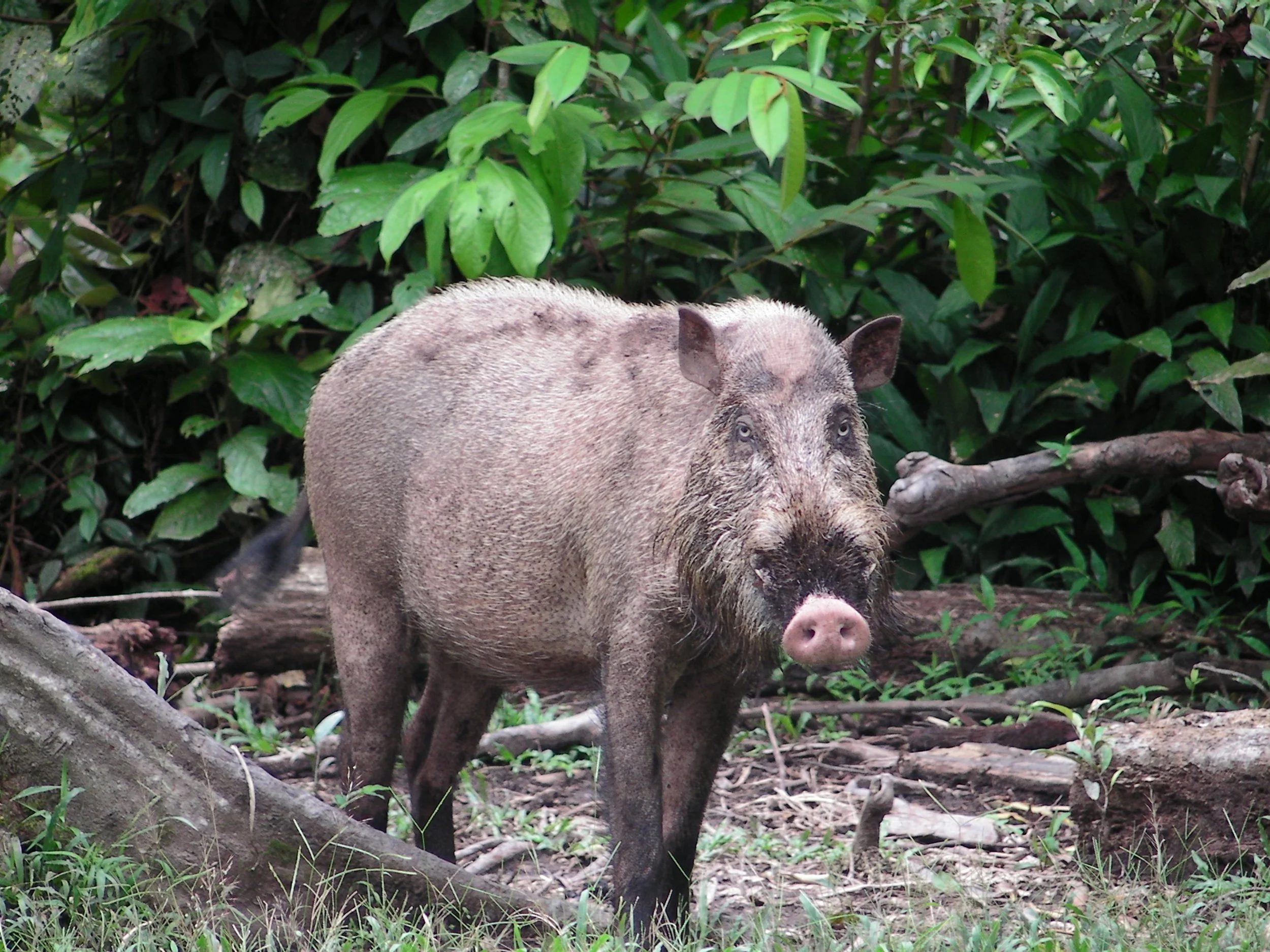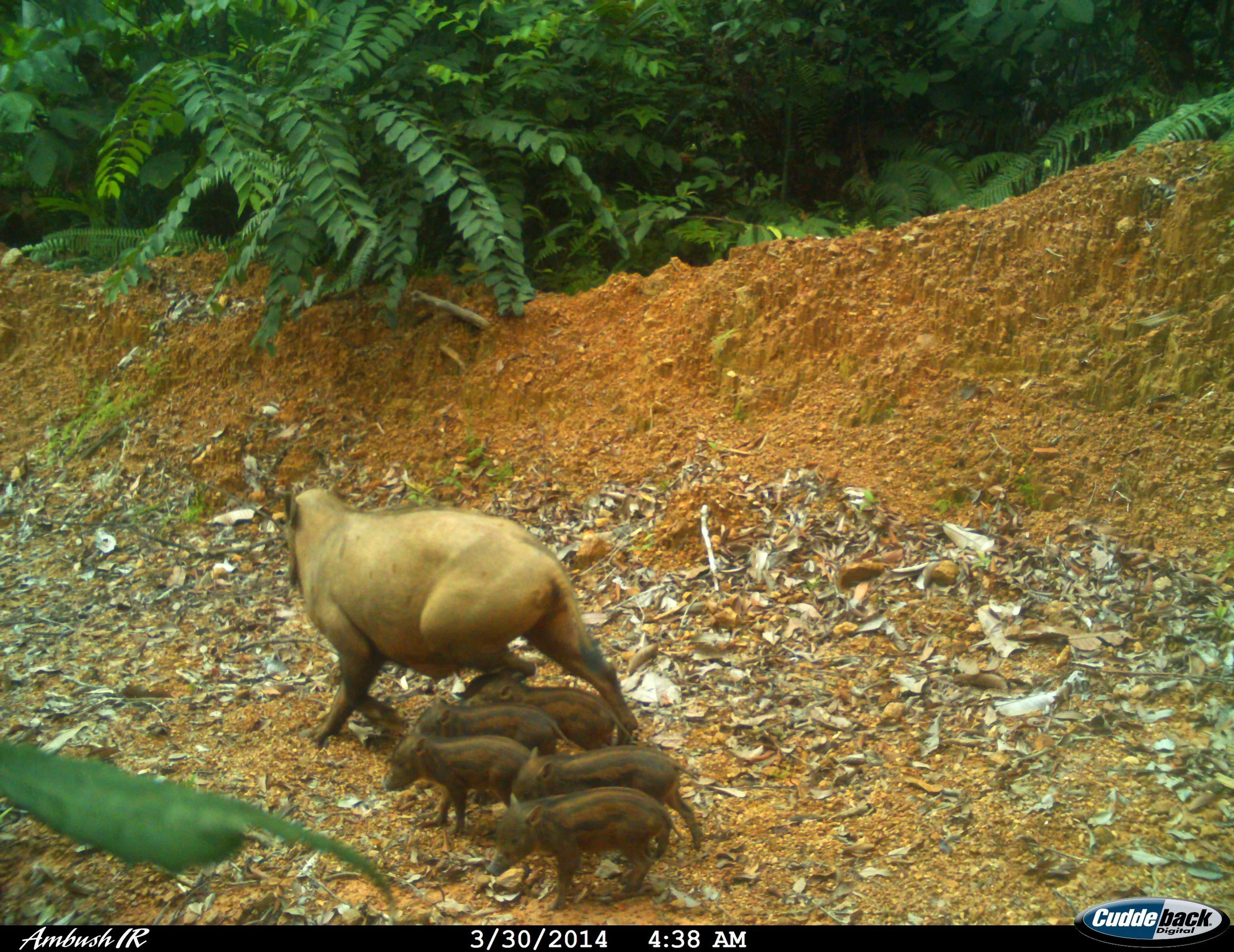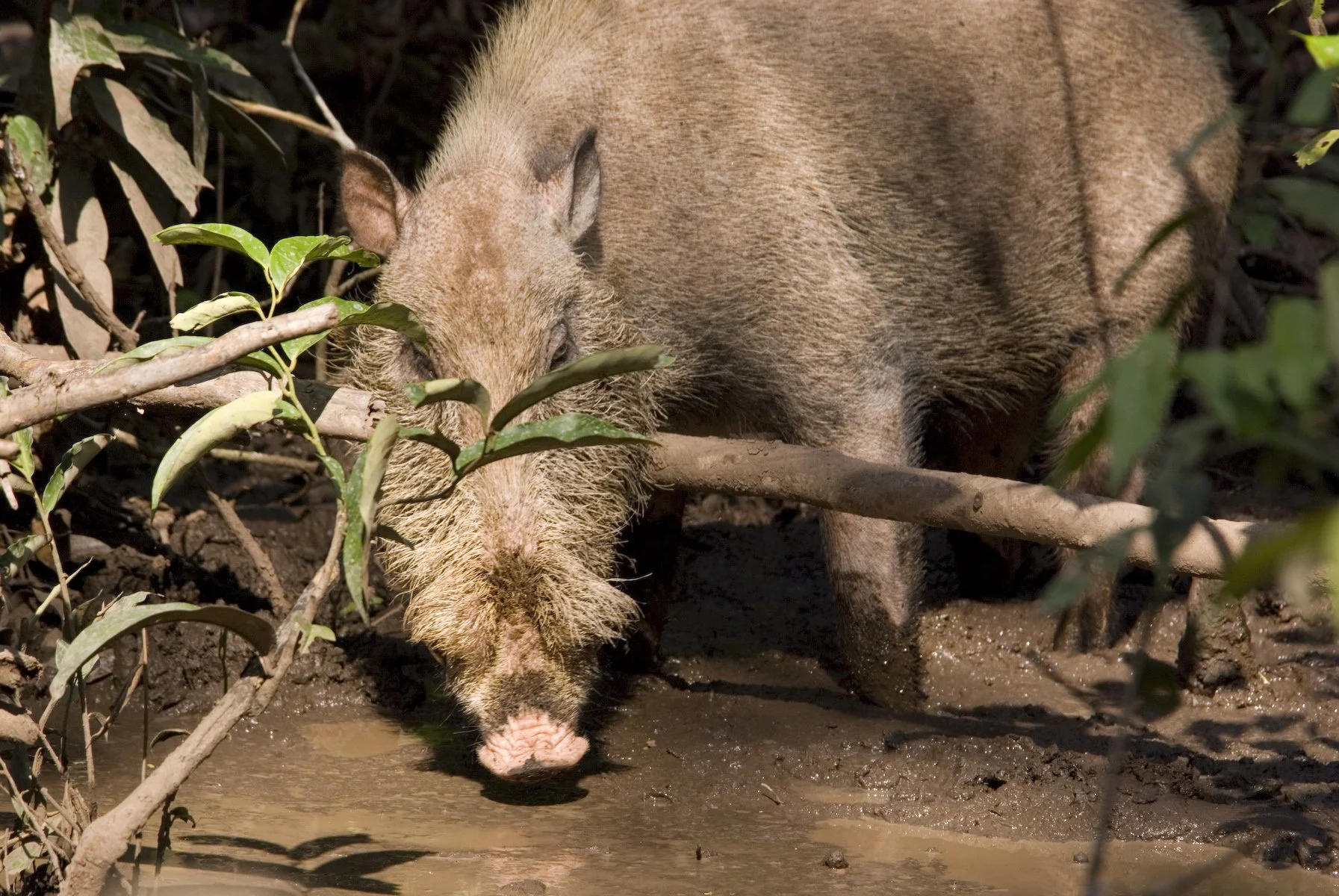Dusk settles over the rainforest, putting some to sleep whilst others stir from their slumber. But today, a different baritone joins the daily orchestra of birds and insects. The rustling of forest leaves, a series of low grunts and snorts - the wild Bornean pig emerges from the bushes.
Once wide-spread throughout Tanjung Puting National Park, the Bornean pig suffered a major blow to its population size in 2021 following the arrival of African swine flu to the island. With the presence of the disease first confirmed in February that year, two months later field researchers were already reporting a total absence of the species in previously inhabited areas.
Camera trap footage from 2014 showing Bornean bearded pig family
Researchers have estimated up to 90% mortality rates for pig populations in contact with the virus, which has dire consequences on the rainforest ecosystem. Bornean tree frogs, for example, use the muddy wallows left behind by pigs as a breeding ground, whilst the tireless foraging of the pigs themselves re-distributes surface soil, speeding up plant decomposition. Without the pigs, ecological niches that are dependent on them cannot be fulfilled, putting the ecosystem out of balance.
Ian Wood
Another serious risk of the pigs decline was that of food scarcity for locals. With some hunter-gatherer communities relying on the previously abundant pig for up to 97% of their bushmeat volume, concerns have been raised over food availability in these communities.
Fortunately, recent footage from our camera traps has revealed some of the first sightings of the Bornean pig since the decline! The species is making a comeback in Borneo’s forests.
These particular individuals also benefit from the safety of the protected National Park, guarded by posts and mobile units, helping to ensure they can survive into the future against negative human activities.





